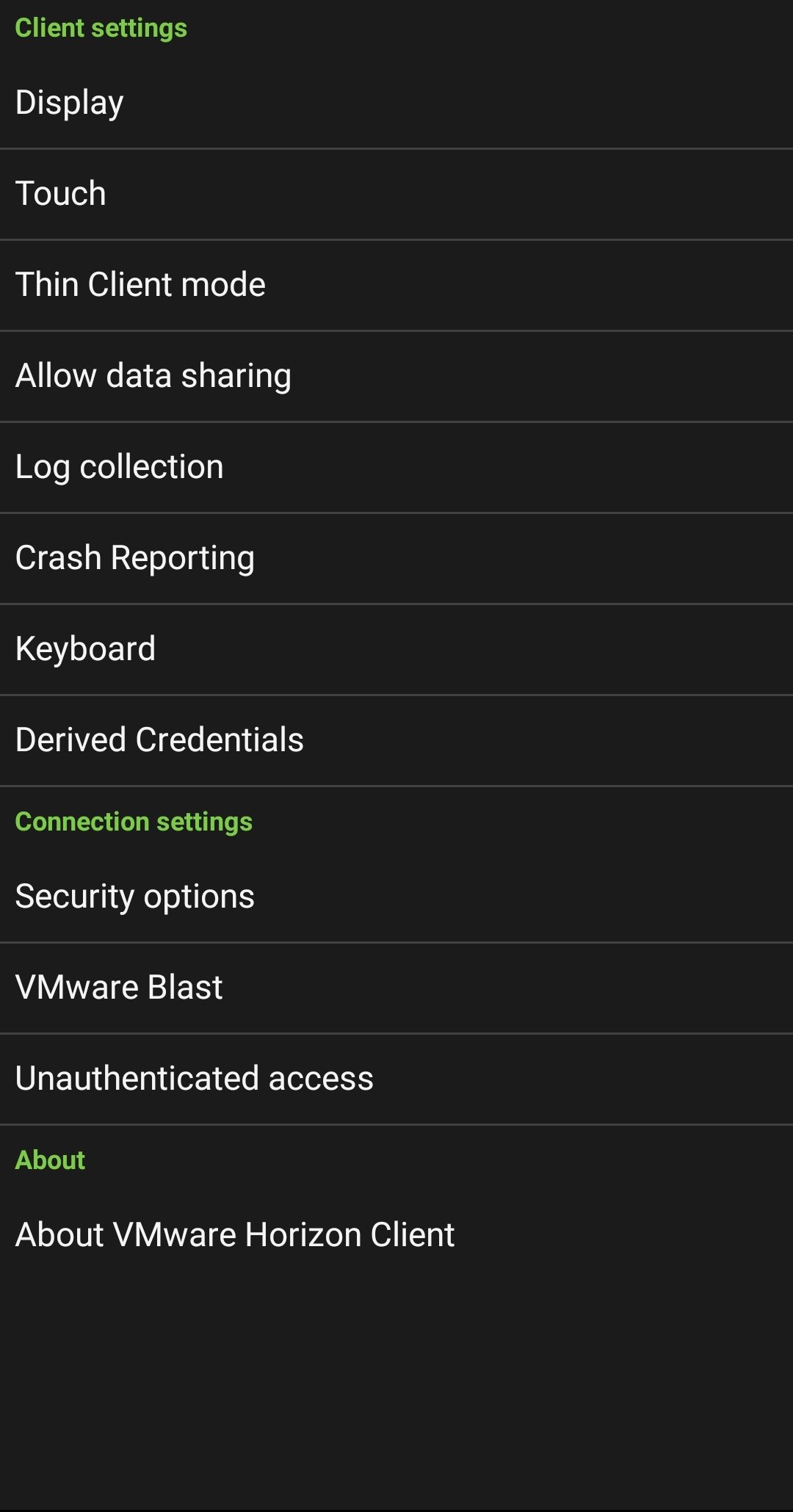

- #Vmware horizon client logo how to
- #Vmware horizon client logo update
- #Vmware horizon client logo manual
- #Vmware horizon client logo software
- #Vmware horizon client logo download
#Vmware horizon client logo software
Attention: Support for VMware Horizon Client & virtual software on personal. Configures proxy server use for VMware Blast connections. Open VMWare Horizon on any library computer and log-in with your CougarNet. Such action may result in instability of the DSP cluster. The settings appear in the VMware Horizon Client Configuration folder in the Group Policy Management Editor. Triggering a GKE autoscaler to run by independent means will not necessarily result in the corresponding scaling in DSP. This information is now withheld by default but can be provided by enabling the Accept logon as current user setting in Horizon Administrator. GKE autoscaling is different from the scaling capabilities in DSP. In order for the Logon as current user feature to work, the broker must provide the Connection Server’s Server Principal Name (Windows identity) to the clients prior to user authentication. Using GKE cluster autoscale with DSP involves setting a minimum and maximum number of nodes on the GKE UI and configuring DSP with those same numbers each time you want to scale your resources up or down.
#Vmware horizon client logo manual
Manual addition or removal of DSP cluster nodes on GKE may cause system instability. Since GKE automatically increases or decreases the physical resources needed to match the needs of the DSP cluster, you cannot manually add or remove any nodes to or from the DSP cluster. To scale DSP up or down on GKE, you must use the commands provided on this page. As such, the process for scaling DSP services up or down on GKE is different from those when scaling up or down in DSP. When the GKE cluster autoscaler is turned on, GKE manages all Kubernetes cluster resources such as nodes, memory, and CPU. VMware Horizon is most often used by companies with 50-200 employees & 10M-50M in revenue. When the Splunk Data Stream Processor is running on Google Kubernetes Engine, the GKE cluster autoscaler feature must be turned on when provisioning the GKE cluster. The client itself has had instances of vulnerabilities and the notion that the BITS can be.

On a desktop browser, look for the TOC in the left pane of this page. We use not only virtual desktops but published applications as well. Or, use the table of contents (TOC) to go to your client guide.
#Vmware horizon client logo how to
Search for "about cluster autoscaling" in the Google Cloud documentation for more information about this GKE feature. To learn how to use Horizon Client, open the client guide for your device: If you have the Horizon Client or browser-based HTML Access app open, click Help in the client user interface. See batch bytes or batch records.Cluster autoscaling for DSP on Google Kubernetes Engineĭata Stream Processor (DSP) deployments built on a Google Kubernetes Engine (GKE) can be configured to use the cluster autoscaling feature on GKE to increase or decrease the scale of node resources. To further improve pipeline throughput, you can add a batching function in your pipeline.
#Vmware horizon client logo update
Use the pulsar-admin CLI tool to update the number of partitions.Pulsar-admin topics get-partitioned-topic-metadata DSP/default-ingest/input (Optional) Get the current number of partitions.Icons representing the available desktop. Kubectl exec -it broker-0 -n pulsar /bin/bash Double Click the Horizon View Client shortcut on the desktop of your device.
#Vmware horizon client logo download
From a controller node in your cluster, get a list of running Apache Pulsar broker pods. By default, the VMware Horizon 8 web portal page shows both an icon for downloading and installing Horizon Client, an icon for connecting through HTML Access, and a link pointing to the client download page on the VMware website.If you do need to decrease the number of partitions, contact Splunk Support. Therefore, if you want to increase the number of input partitions, make sure that you do not overallocate input partitions in the process. The Splunk Data Stream Processor uses Apache Pulsar as the message bus for the following data sources: Read from Splunk Firehose, Read from Forwarders Service, and Read from the Ingest REST API.ĭata loss may occur when decreasing the number of partitions later on. You can increase the parallelism of certain pipelines by increasing the number of input partitions of the internal Apache Pulsar message bus. The throughput of your pipelines is highly correlated with the parallelism of the pipeline. Increase internal partitions to improve pipeline throughput


 0 kommentar(er)
0 kommentar(er)
